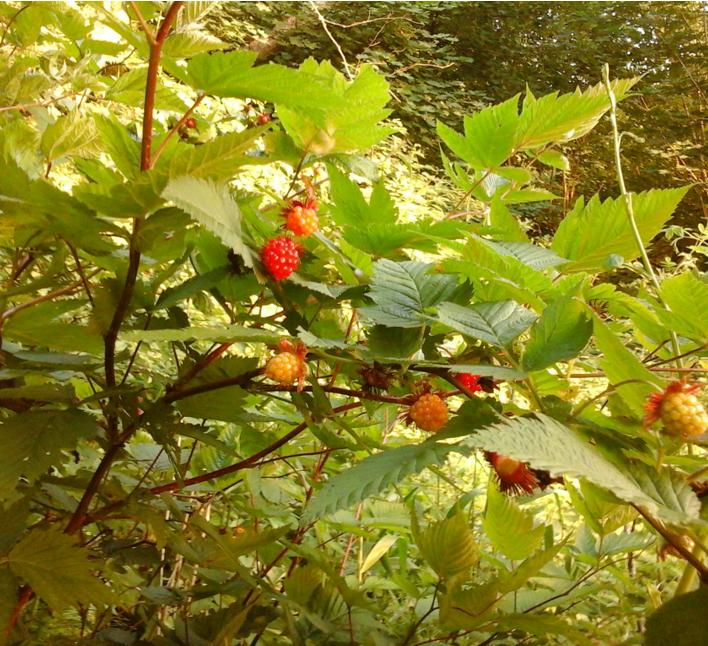Stink Currant The Currant Family–Grossulariaceae
Ribes bracteosum Douglas ex Hook.
(rye-BEEZ brak-tee-OH-sum)
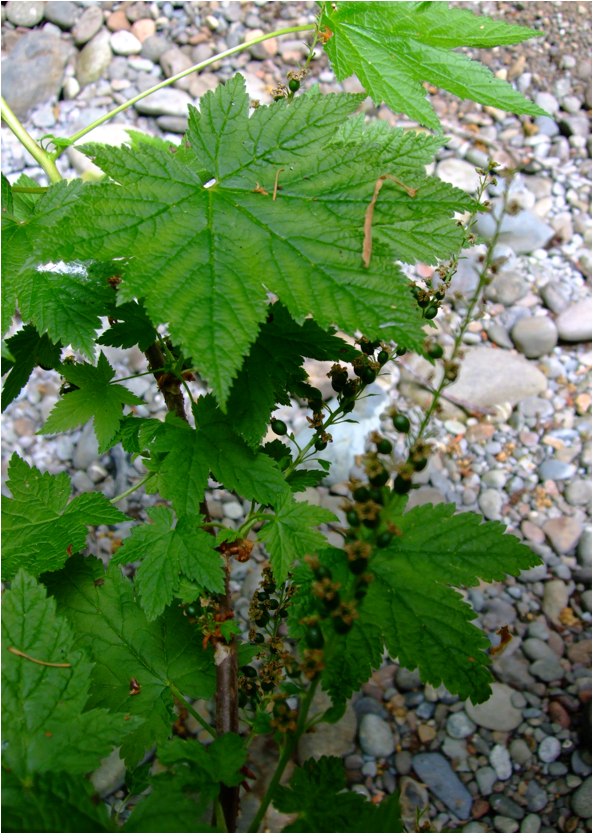 Names: Stink Currant is also sometimes called Blue Currant, Stinking Black Currant or Californian Black Currant. All parts of this plant are sprinkled with yellow glands that emit a sweet-skunky odor—giving it its common name. Bracteosum refers to the 1-3 tiny bracteoles (small bracts) immediately under the flower. Currants and gooseberries belong to the genus Ribes (from the Arabic or Persian word ribas meaning acid-tasting).
Names: Stink Currant is also sometimes called Blue Currant, Stinking Black Currant or Californian Black Currant. All parts of this plant are sprinkled with yellow glands that emit a sweet-skunky odor—giving it its common name. Bracteosum refers to the 1-3 tiny bracteoles (small bracts) immediately under the flower. Currants and gooseberries belong to the genus Ribes (from the Arabic or Persian word ribas meaning acid-tasting).
Relationships: Some taxonomists separate gooseberries into the genus or subgenus, grossularia. In general, gooseberry plants have prickles; currants do not. Ribes is the only genus in grossulariaceae; which is closely allied with escalloniaceae, and iteaceae; all formerly included in saxifragaceae. There are about 150 species of Ribes in the temperate regions of the northern hemisphere, northwest Africa, Central America and in the Andes of South America; with about 50 native to North America. 30 are listed in the Vascular Plants of the Pacific Northwest. About 7-8 are native to the west side of the Cascades with about a dozen more found chiefly on the east side of the Cascades and ~17 limited to California or Oregon.

Distribution of Stink Currant from USDA Plants Database
Distribution: This species is native from southern Alaska to the northern California coast, mostly on the west side of the Cascades.
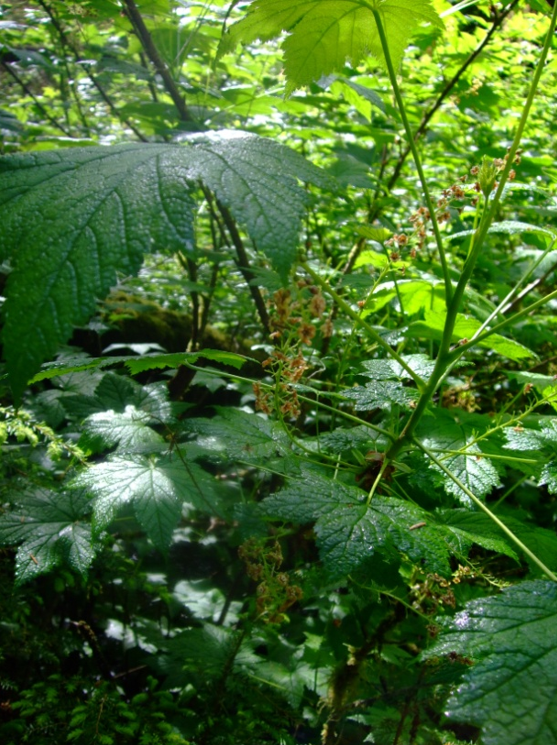
Growth: Stink Currants grow from 4-9 feet (1.5-3m) tall.
Habitat: They usually in moist to wet woods, along streambanks. Wetland designation: FAC, Facultative, it is equally likely to occur in wetlands or non-wetlands.
Diagnostic Characters: Leaves are large, like maple leaves, sparsely hairy to smooth, with 5 to 7 lobes, stinky when crushed. Flowers are numerous on mostly erect clusters; with white petals and brownish-purple to greenish-white calyces. Berries are blue-black with a whitish bloom.
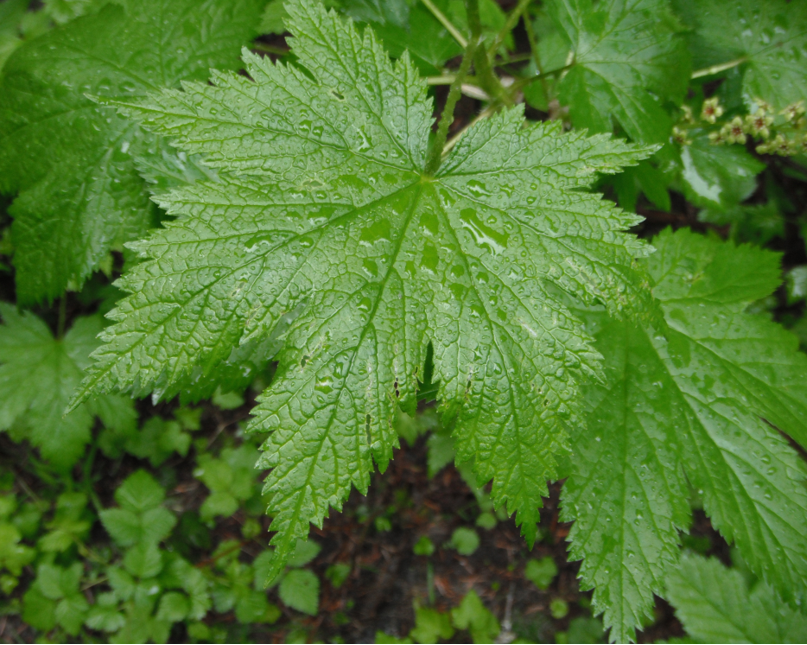
In the Landscape: Stink Currant has not been used much in ornamental landscapes but its large maple-like leaves are attractive and its flowers are interesting. The leaves turn yellow in the fall, It could be just the right plant for a shady woodland garden next to a babbling brook.
Phenology: Bloom time: May-June. Fruit ripens: August-September.

Propagation: Seed is best sown as soon as it is ripe in the autumn in a cold frame. Stored seed requires 3 months cold stratification at 35º F (2º C) Cuttings of semi-hardwood taken in July/August or of mature wood November-February are possible.
Use by People: Berries were eaten fresh, often with grease or oil, by several native tribes. The Quileute removed the pith from the stem and used them to inflate seal stomachs that were used to carry oil. The leaves were used to cover hemlock bark containers in which elderberries were stored. The berries have been variously described as unpleasant, disagreeable and not very palatable to bland, slightly bitter, not very juicy, mealy textured, to not unpleasant, having a mild black currant flavor, and delicious. The fruit can be used in pies, preserves, or jams.
Use by Wildlife: Currants and gooseberries are an important food for songbirds, chipmunks, and ground squirrels. Flowers are pollinated by insects and hummingbirds. The foliage is eaten by Butterflies.
Links:
Consortium of Pacific Northwest Herbaria
WTU Herbarium Image Collection, Plants of Washington, Burke Museum
E-Flora BC, Electronic Atlas of the Flora of British Columbia
Jepson Eflora, University of California
Ladybird Johnson Wildflower Center
Native American Ethnobotany, University of Michigan, Dearborn

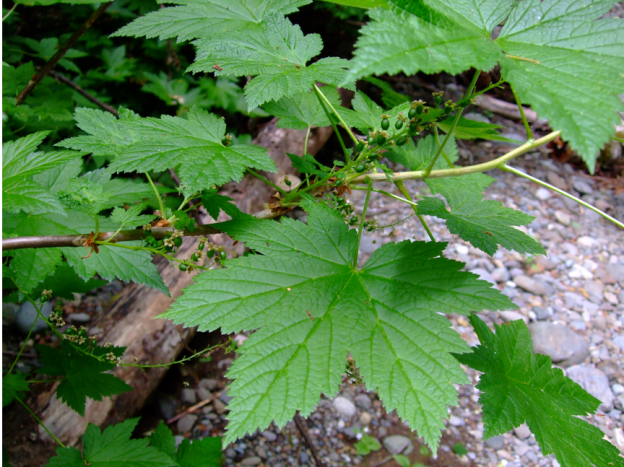
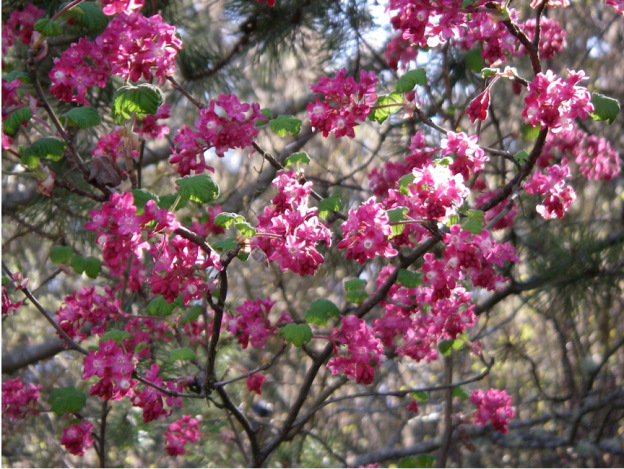
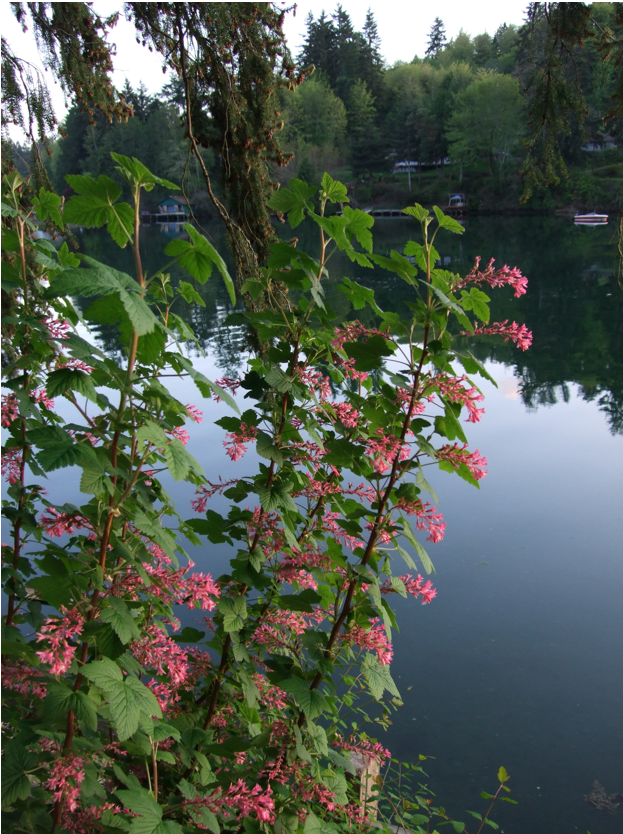 Names: Other common names include Pink Winter Currant and Blood Currant. Sanguineum means “blood-red;” referring to the color of the flowers; although the flowers are usually a rosy or pale pink. You may find plants with flowers ranging from white to a deep red. There are several named cultivated varieties with red, pink, two-tone or white flowers. Var. glutinosum, found along the coast of California and Oregon, has less hairy leaves. Currants and gooseberries belong to the genus Ribes (from the Arabic or Persian word ribas meaning acid-tasting).
Names: Other common names include Pink Winter Currant and Blood Currant. Sanguineum means “blood-red;” referring to the color of the flowers; although the flowers are usually a rosy or pale pink. You may find plants with flowers ranging from white to a deep red. There are several named cultivated varieties with red, pink, two-tone or white flowers. Var. glutinosum, found along the coast of California and Oregon, has less hairy leaves. Currants and gooseberries belong to the genus Ribes (from the Arabic or Persian word ribas meaning acid-tasting).
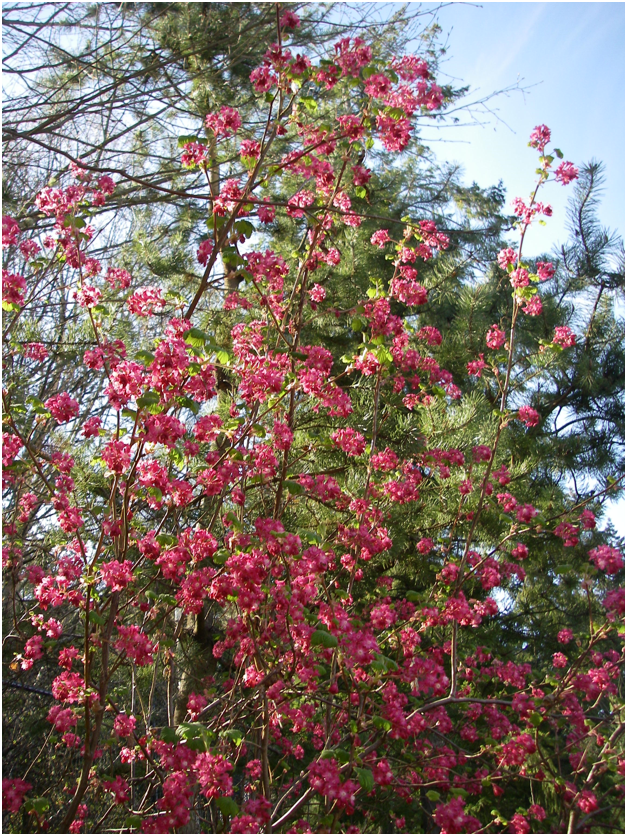
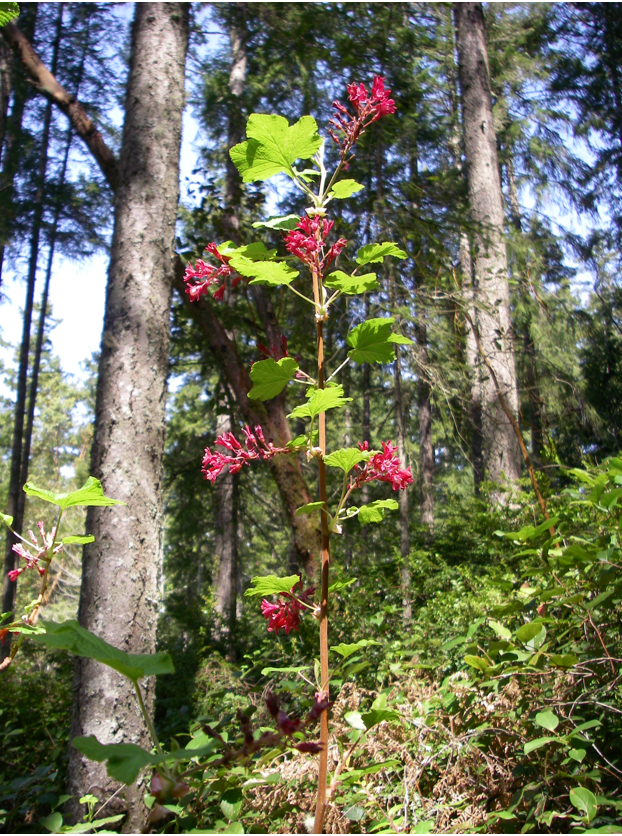
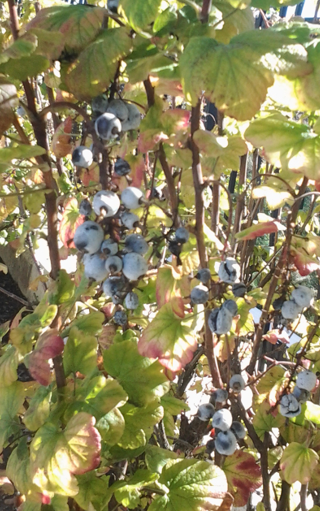
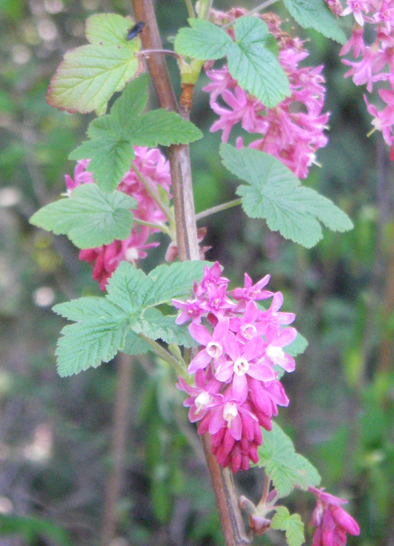
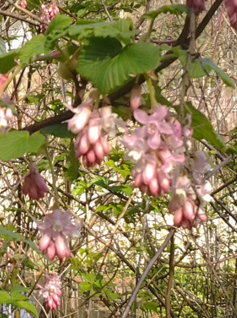
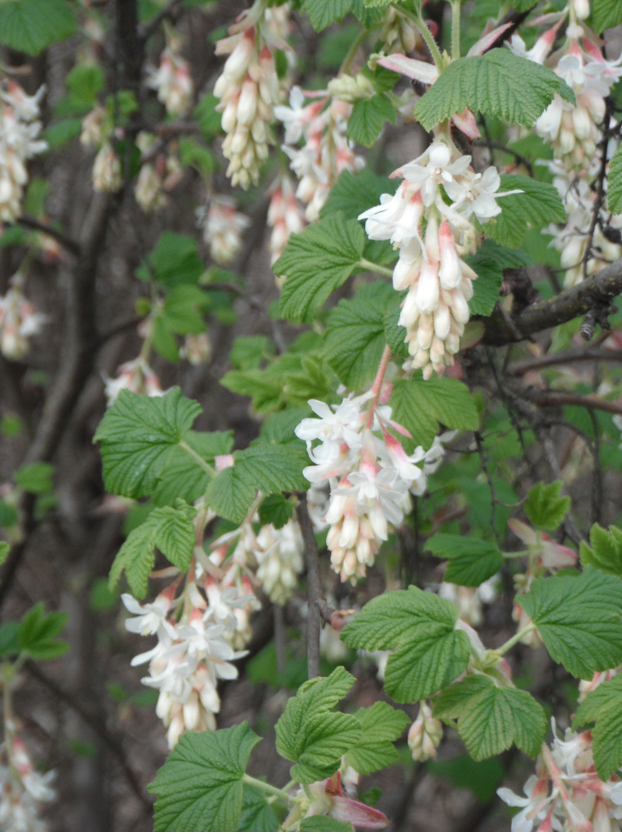
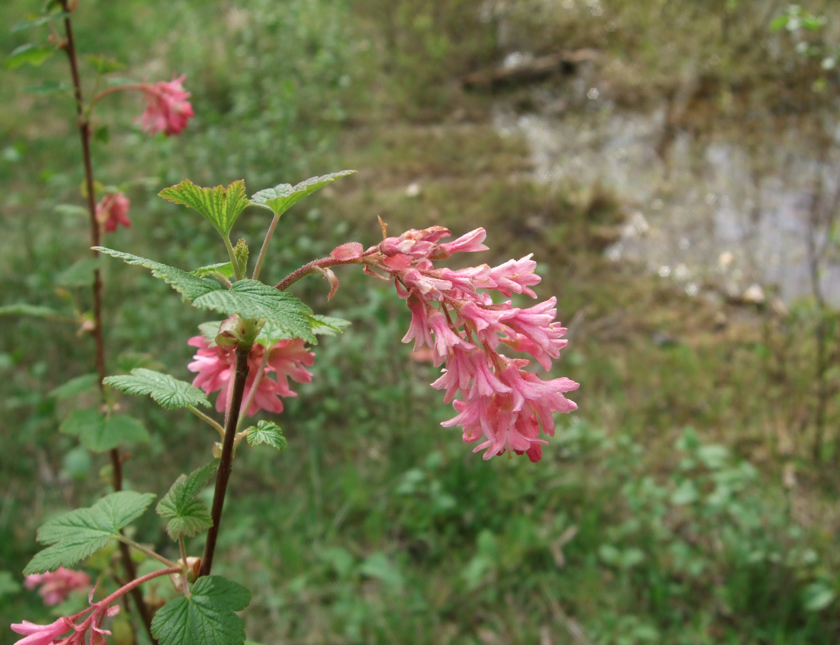
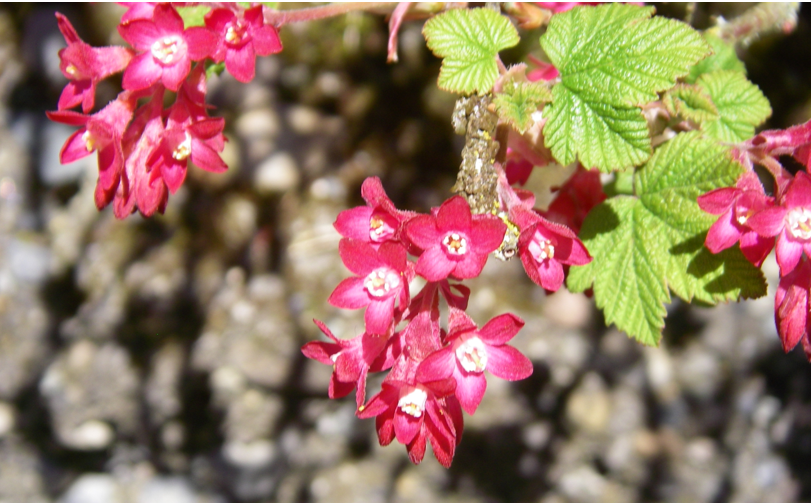
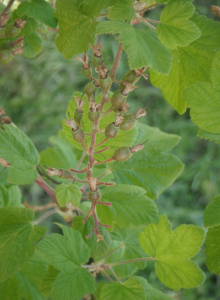
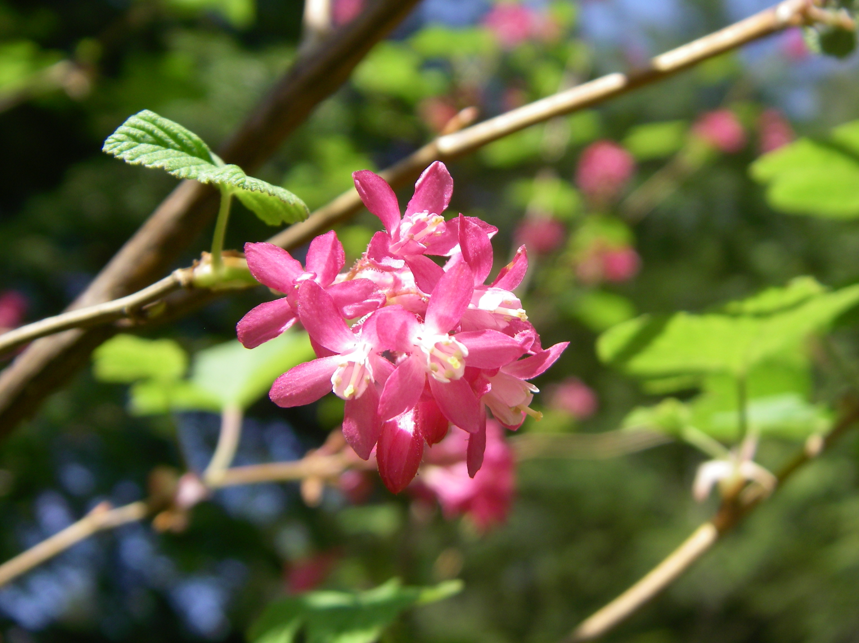
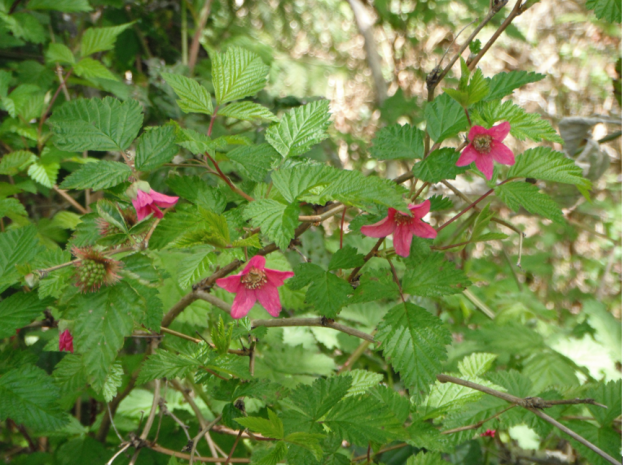
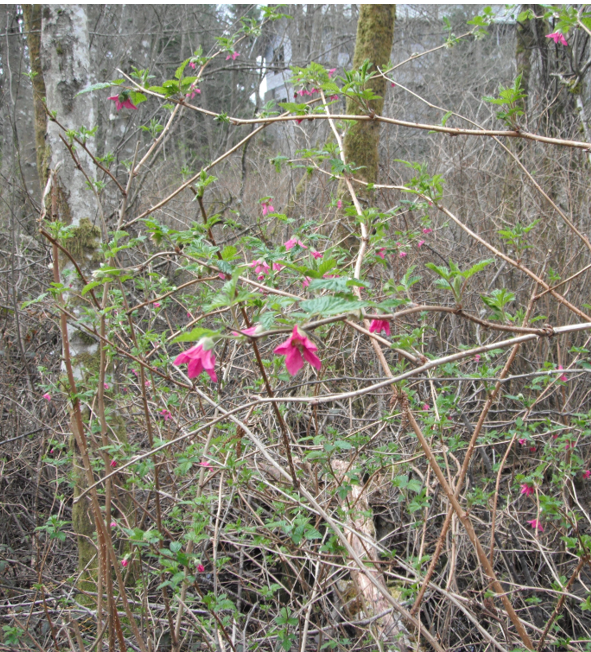
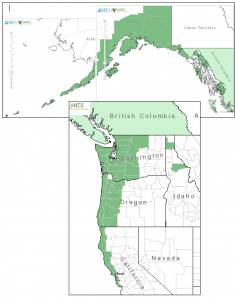

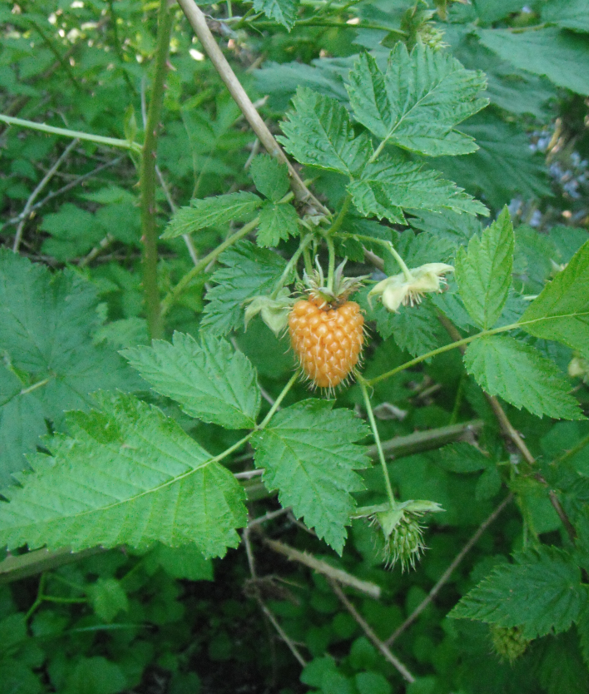 Diagnostic Characters: The arching stems of Salmonberry have golden-brown, shedding bark, similar to Pacific Ninebark. Salmonberry stems, although largely unarmed, can range from having scattered prickles to being very bristly. Smaller twigs zigzag slightly from node to node. Leaves have 3 sharply toothed leaflets, the lateral ones smaller and sometimes unequally lobed or divided. Five-petalled flowers are a striking pink to reddish-purple. The fruits are raspberry-like with a hollow core, ranging from yellow to orange-red.
Diagnostic Characters: The arching stems of Salmonberry have golden-brown, shedding bark, similar to Pacific Ninebark. Salmonberry stems, although largely unarmed, can range from having scattered prickles to being very bristly. Smaller twigs zigzag slightly from node to node. Leaves have 3 sharply toothed leaflets, the lateral ones smaller and sometimes unequally lobed or divided. Five-petalled flowers are a striking pink to reddish-purple. The fruits are raspberry-like with a hollow core, ranging from yellow to orange-red.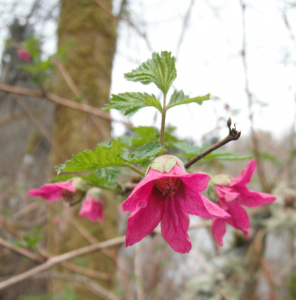 Phenology: Bloom time: April-May. Fruit ripens: May-July.
Phenology: Bloom time: April-May. Fruit ripens: May-July.